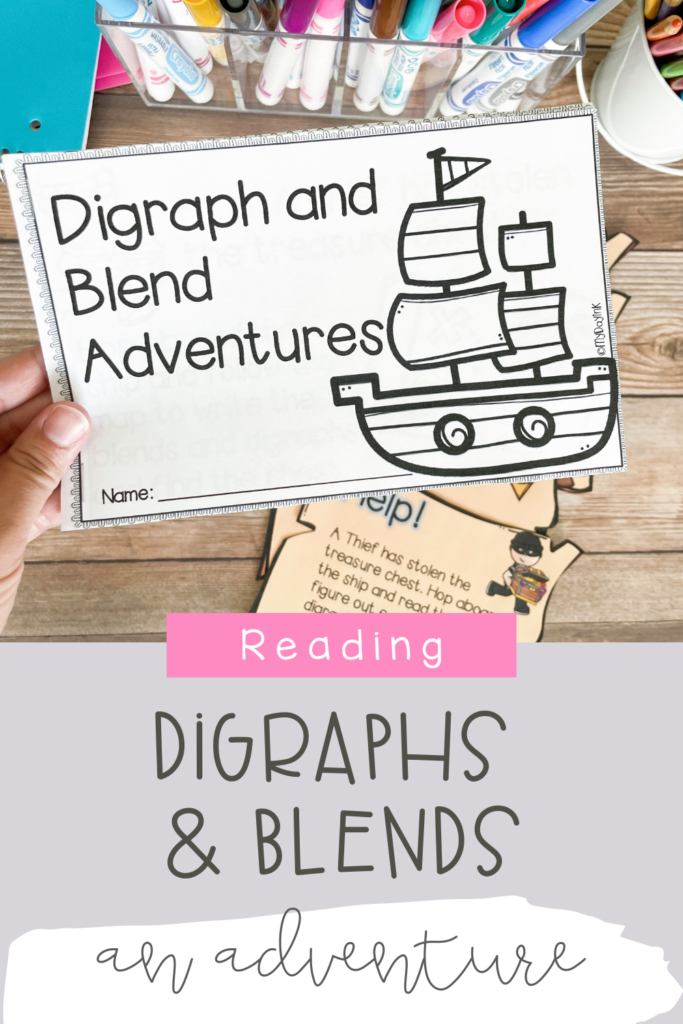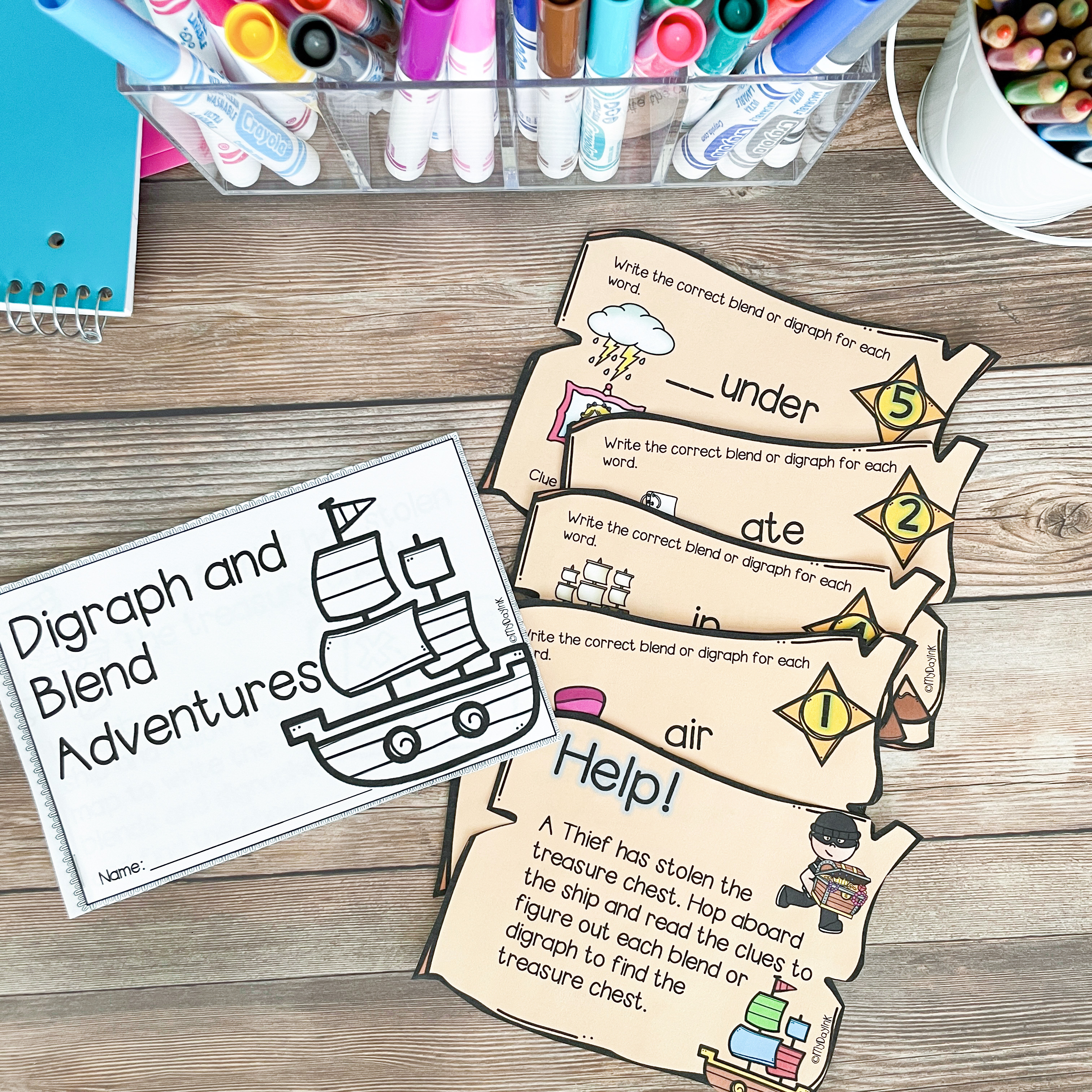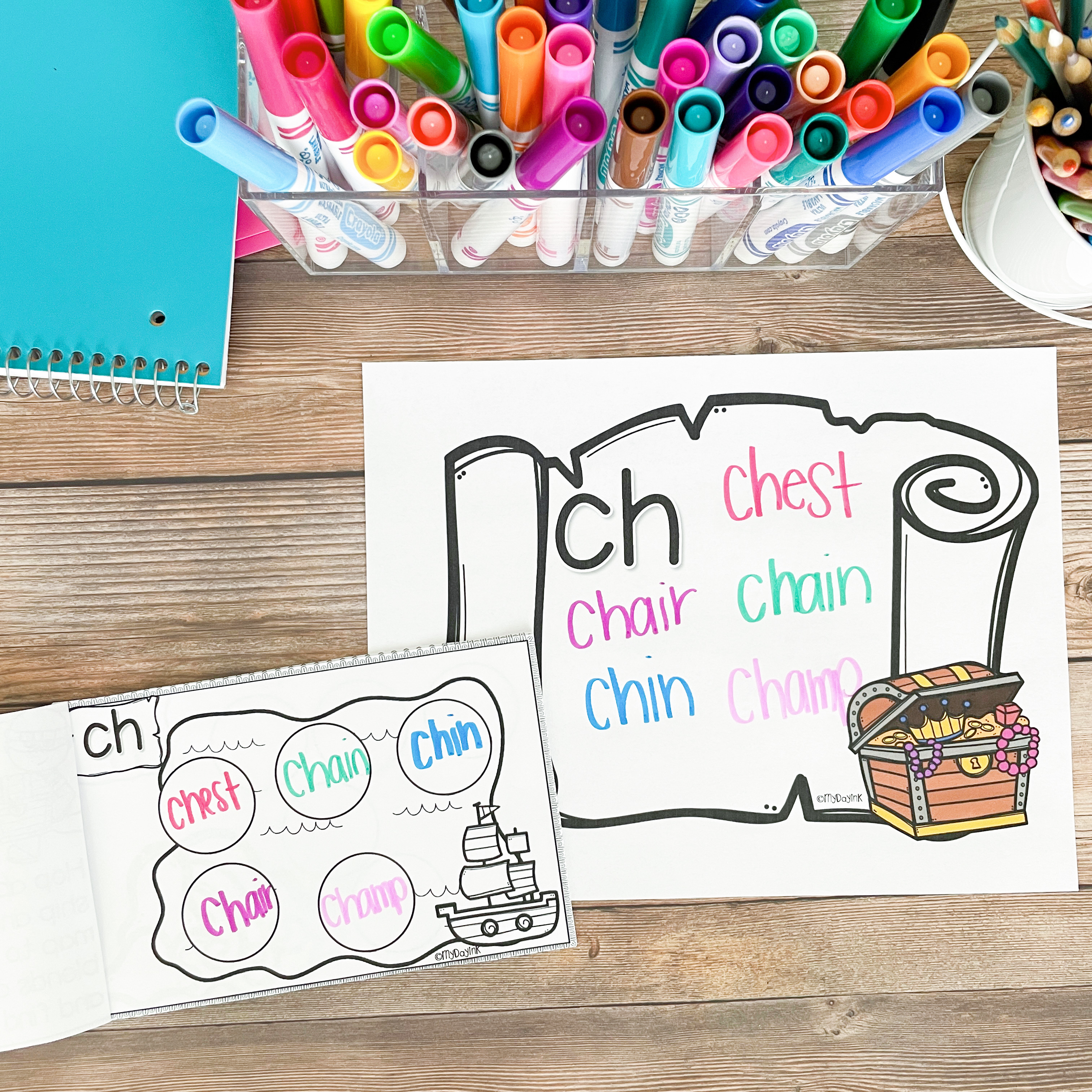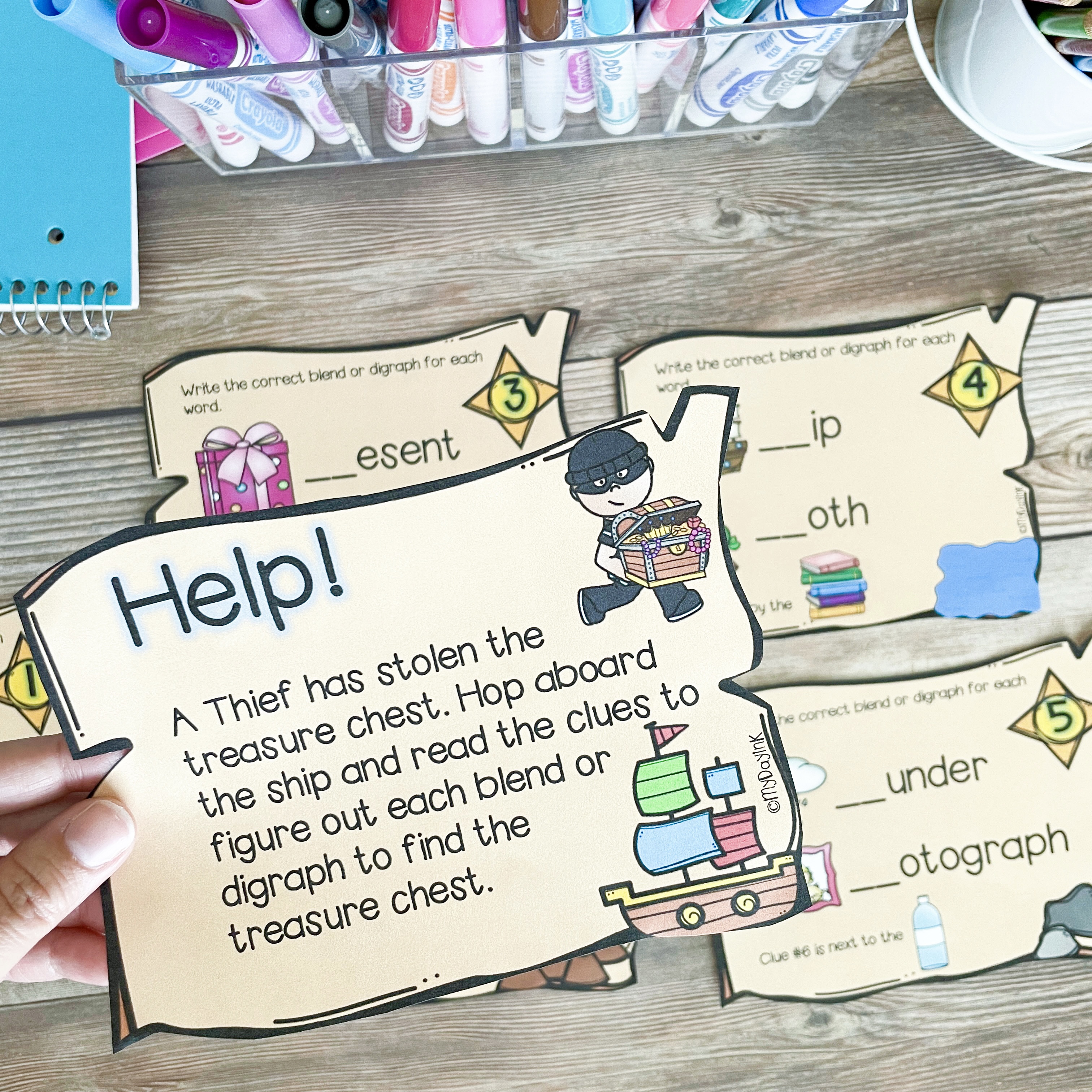Unleashing the Magic of Digraphs and Blends: Phonics Fun for Your Classroom!
Teaching phonics can be an exciting and stressful adventure for both educators and students alike. It’s the key that unlocks the world of reading, spelling, and word recognition. Today, I want to talk about “digraphs and blends.” We’re gonna look into the world of consonant digraphs and blends. I’ll even give you some engaging activities to pump up your students and make them love phonics! Who’s excited!?
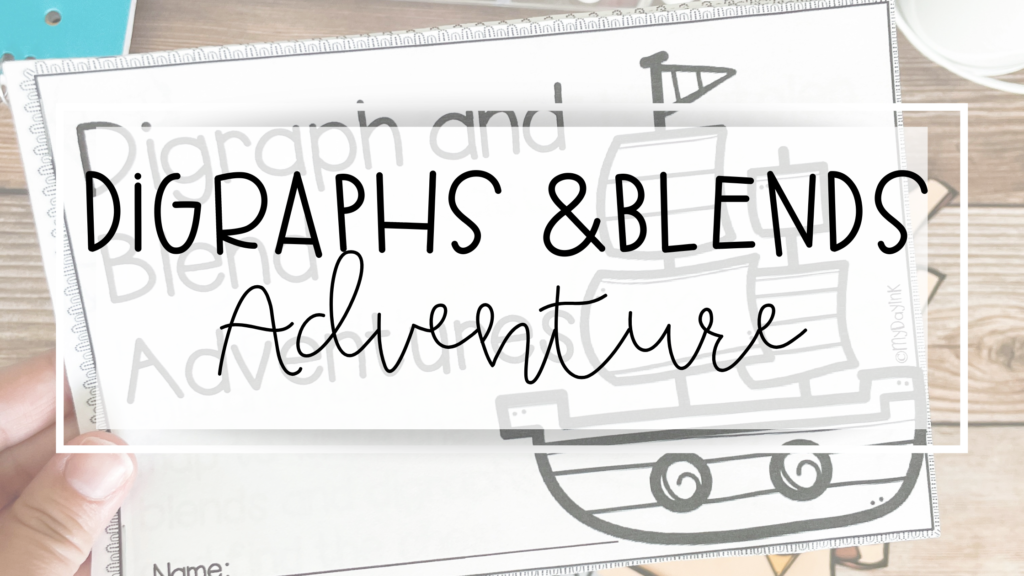
So, how is this all gonna work? Each section will give you a little bit of an exploration into the different parts of reading, spelling, and word recognition. From consonant blends and digraphs to engaging literacy games, let’s ensure you are ready with the tools and knowledge to make phonics a joyful experience in our classrooms.
Exploring Consonant Blends and Digraphs
Consonant blends and digraphs as the stars of this show. These powerful letter combinations help bring words to life. From “bl” to “ch” and “sh” to “th,” these magical pairings produce a single sound that fascinates our young readers.
Conquering Digraphs and Blends
In the world of phonics, consonant blends are like puzzle pieces that fit perfectly together. They occur when two or more consonants are blended together, creating a unique sound. With words like “start,” “blend,” and “crisp.” Use centers, games, and other opportunities to introduce your 1st or 2nd grade students to these essential letter combinations!
Fun Constant Digraphs and Blends Activities
Here are some fun, constant blend, and digraph activities you can add to your reading groups, centers, or even during a whole group lesson! They are engaging, fun, and simple activities that will not only help students with these challenging concepts but allow them to see just how easy they can be!
BINGO
Consider playing class ‘BINGO.’ You can easily create a BINGO board using a program like this one. The child picking out the card must blend the word, read it (with help from the class if necessary), and students then try and match it to the correct word on their board if they have it. The student who makes a line first shouts, “BINGO!”
Change the word
Simply change one letter each time to make a different word. Sometimes it’s possible to end with the same word you started with. “Ship, chip, slip, etc.” This is great for both blending and segmenting.
What’s in the bag?
Have a bag of objects to match the words you wish to practice reading. Students get to reach into the bag and pull out an object. You write the name of the object on the board, and students identify the blend or digraph.
Draw it
Prepare some simple sentences beforehand. In pairs, ask the children to draw the sentence on their whiteboard, paper, etc. Then work together to find all the digraphs and blends in the sentence.
Getting students up and moving while teaching reading or getting their brains working in different ways can help their ability to recognize digraphs and blends a little easier.
Dive into Blends and Digraphs Games
When learning becomes a game, the magic happens! Create a captivating learning experience by incorporating phonics literacy centers and games into your curriculum. One fantastic resource to consider is the Consonant Blends and Digraphs Phonics Literacy Center and Games. This versatile resource provides a long list of activities and worksheets to reinforce consonant blends, digraphs, sight words, and more. Engage your students in small group activities that promote phonics mastery while keeping them entertained.
As teachers, our goal is to cultivate a love for reading and empower our students to become confident readers. By introducing blended words, we encourage students to blend sounds effortlessly. Blend words, such as “sprint,” “black,” and “crunch,” become stepping stones to expanding their vocabulary and building fluency. Watch as your students’ reading skills soar!
The journey through the enchanting world of digraphs and blends has been a delightful adventure. From the captivating consonant blends to the powerful digraphs, our students have discovered the magic of phonics. Remember, teaching phonics isn’t just about decoding sounds—it’s about sparking a lifelong love for reading, expanding vocabulary, and nurturing confident readers. So, let’s continue to create engaging lessons, incorporate playful activities, and celebrate the joy of blended sounds. Happy blending teachers!
